Practical Catfish Food Guide: Real Tips from Farmers
Over the years, we've worked closely with catfish farmers in countries like Vietnam, India, and Bangladesh. One key thing we've learned: feed can make up over 50% of total farming costs, and its quality directly affects growth and profit. That's why we put together this practical guide-to help you choose the right feed, balance nutrition, and feed efficiently for better results.
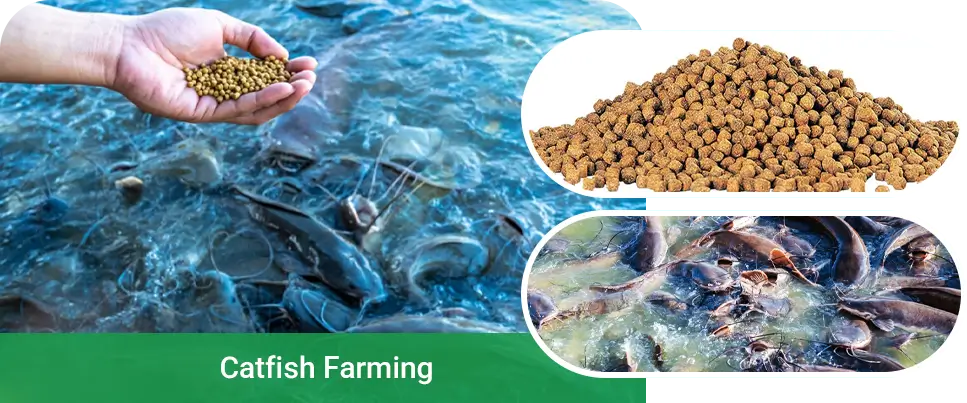
Catfish Behavior You Should Know
Catfish are a popular choice for farmers because they grow fast, survive well, and have good-quality meat. Common types include African catfish, channel catfish, and hybrids. Before choosing the right food, it's helpful to understand how catfish behave.
Catfish are bottom feeders that like to stay near the bottom of the pond. They usually eat in the evening or at night, and during the day, they tend to rest or hide.
Sinking food matches their natural feeding habits, helping improve intake and reduce stress. While floating catfish feed makes it easier to watch how much they eat and adjust feeding accordingly.
Both types work-just choose what suits your setup best.
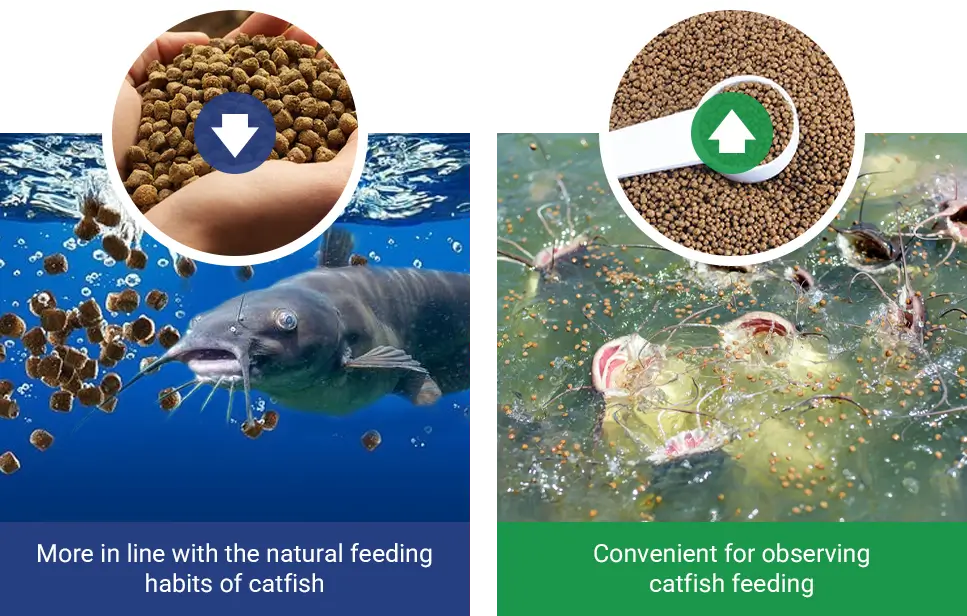
What to Feed Catfish at Each Stage
Catfish need different nutrition at each stage of growth. Here's a quick guide on what to feed at each stage:
1. Fry Stage (3–8 cm)
- Feed Type: High-protein micro pellets or fine powder
- Protein Level: 40%–45%
- Pellet Size: 1–1.5 mm
Tip: At this stage, catfish have weak digestion. Use easy-to-digest, high-protein feed. You can also add small amounts of live feed like bloodworms or brine shrimp to boost appetite.
2. Fingerling Stage (8–20 cm)
- Feed Type: Small sinking pellets
- Protein Level: 35%–40%
- Pellet Size: 2–3 mm
Tip: This is a key growth period. Make sure the feed is well-balanced. Adding animal protein like fish meal or silkworm pupae can help with faster weight gain.
3. Adult Stage (20 cm and above)
- Feed Type: Medium to large sinking fish pellets
- Protein Level: 28%–35%
- Pellet Size: 4–6 mm
Tip: Focus on building body weight and size. You can lower costs by adding some plant protein, like soybean meal or cornmeal, while keeping the feeding steady.
4. Before Harvest
- Feed Type: Medium-protein sinking pellets (can be mixed with formulated feed)
- Protein Level: 26%–30%
Tip: Lower the protein slightly and increase energy to cut costs. This helps keep the fish healthy with a good appearance, which is important for selling or processing.
Why Protein Is Key in Catfish Feed Formulation
Protein is what fish use to build muscles and grow, especially during their early stages. For fast-growing catfish, the right protein level helps them gain weight quickly, stay healthy, and feed more efficiently. Too little protein can slow growth and weaken the fish. But too much just gets wasted-and drives up your costs.
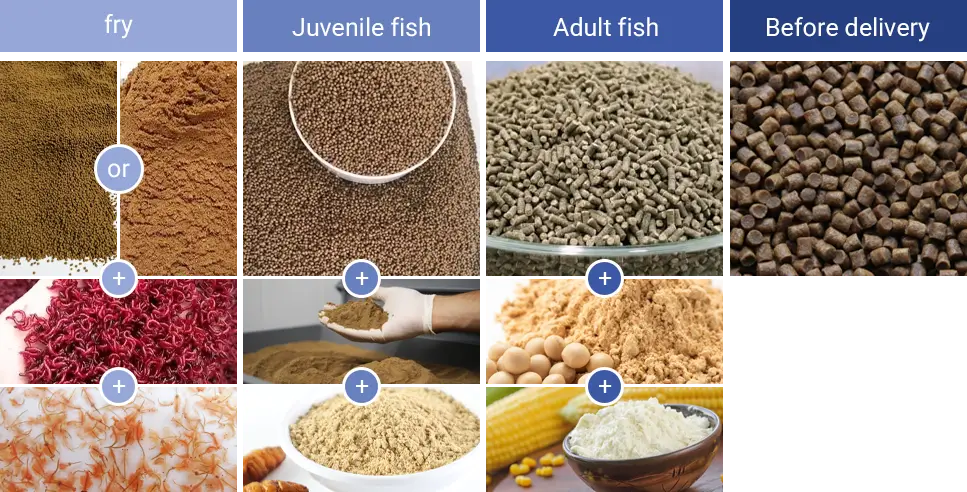
Why Make Your Own Catfish Food Pellets
With feed prices going up, buying ready-made feed can get expensive. Have you thought about making your own catfish pellets?
The best part about making your own food is flexibility. You can adjust the mix based on your catfish's growth stage, your setup, and how much you want to spend. It's often cheaper than buying ready-made feed-and you get better control over the nutrition.
For larger farms or when prices go up, homemade feed can really help you stay efficient and cut costs.
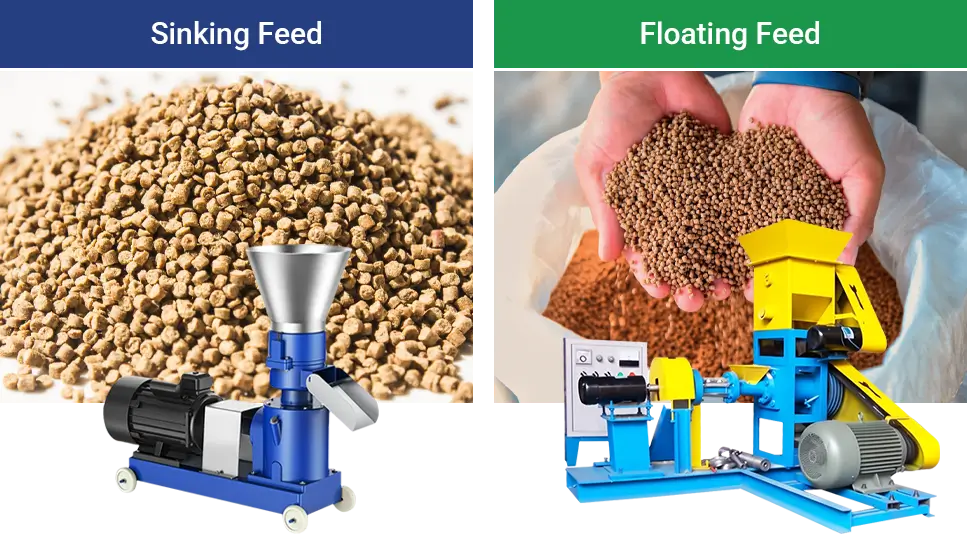
Recommended Feed Formulas (per 100 kg)
Based on years of hands-on experience and real feedback from farmers, we've put together practical feed formulas for different catfish growth stages.
1. Fry Stage (3–8 cm)
| Ingredient | Amount (kg) |
| Fish meal | 25 |
| Soybean meal | 30 |
| Corn flour | 20 |
| Wheat flour | 10 |
| Fish oil | 3 |
| Vitamin premix | 1.5 |
| Mineral additives | 1.5 |
| Feed attractant | 0.5 |
| Mineral additives | 0.5 |
2. Fingerling Stage (8–20 cm)
| Ingredient | Amount (kg) |
| Fish meal | 15 |
| Soybean meal | 35 |
| Corn flour | 25 |
| Wheat bran | 10 |
| Animal oil | 3 |
| Vitamin premix | 1.5 |
| Mineral additives | 1.5 |
3. Adult Stage (20 cm and above)
| Ingredient | Amount (kg) |
| Fish meal | 8 |
| Soybean meal | 35 |
| Corn flour | 30 |
| Wheat bran | 15 |
| Animal oil | 3 |
| Vitamin premix | 1.5 |
| Mineral additives | 1.5 |
| Feed attractant | 0.5 |
Some catfish farmers we've worked with use alternative feeds like animal organs, earthworms, or even tadpoles by adding frogs or toads to the pond. This approach can increase feeding activity and add variety to the diet. But it's important to handle these feed options with care. Make sure the sources are safe and clean and keep an eye on costs-sometimes these methods can end up being more expensive.
Easy Steps to Make Catfish Feed
Once you've got the formula, making your own feed isn't hard. Just crush the ingredients, mix them well, and run the mix through a pellet mill or extruder. After that, cool and dry the pellets, then store them properly.
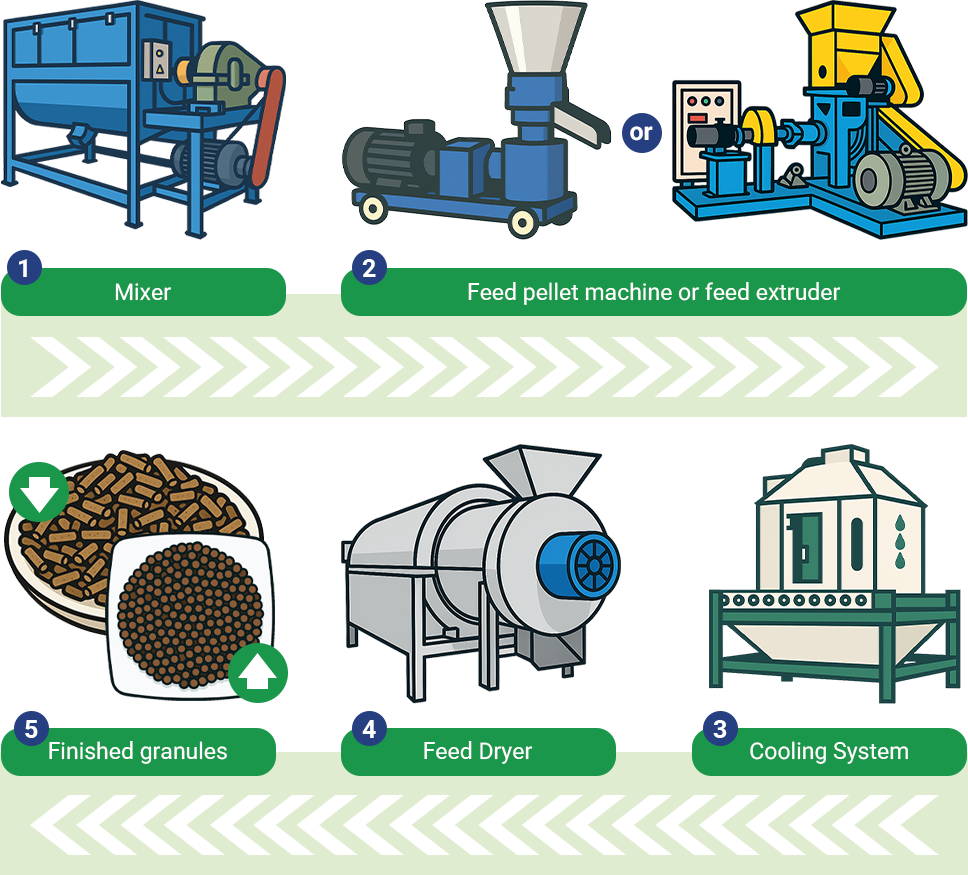
Practical Feeding Tips Share
After talking with some high-performing farmers, we found they manage feeding more carefully and effectively. Based on their real experience, here are a few practical tips that might help you:
Feed at the Right Time
Catfish eat most actively around dawn and dusk. They stay less active during the day but may still feed at night.
Recommended feeding times:
- Morning: 6:30–8:00
- Evening: 17:00–18:30
Feeding during these times often leads to better results-fish tend to eat more, and there's noticeably less leftover feed.
Watch the Feeding Amount
Catfish at different stages need different amounts of feed. How much to feed depends on their weight, water temperature, and how actively they eat.
| Stage | Feed (% of body weight) | Times per day |
| Fry (<50g) | 6%–8% | 2–3 times |
| Juvenile (50–200g) | 4%–6% | 2 times |
| Adult (>200g) | 2%–3.5% | 1–2 times |
Quick tip: If they finish eating in 20–30 minutes, the amount is about right. If there's leftover feed, you're probably overfeeding.
Manage Water Quality
Overfeeding can lead to leftover feed, which spoils quickly and harms water quality. Good water management is key:
- Check for uneaten feed within 30 minutes after feeding-remove it if needed.
- On hot days or when air pressure is low, fish may get stressed and cut back on feed.
- Test the water at least twice a week, especially for oxygen and ammonia levels.
If you notice the fish eating less, staying still, or surfing more often, it's likely a water quality or stress issue. In that case, stop feeding and check the water first.
At the end of the day, success in catfish farming comes down to the details. What you feed, how you mix it, and how you feed it-all of it affects how well your fish grows and how much it costs. We hope this guide gives you some useful ideas to improve your feeding strategy and avoid common mistakes.
If you're thinking about making your own feed or setting up a feed production line, feel free to contact us!

 Online Contact
Online Contact Send Message
Send Message
Need Some Help?
Contact us quickly and we will reply you within 24 hours. We will not disclose your information.